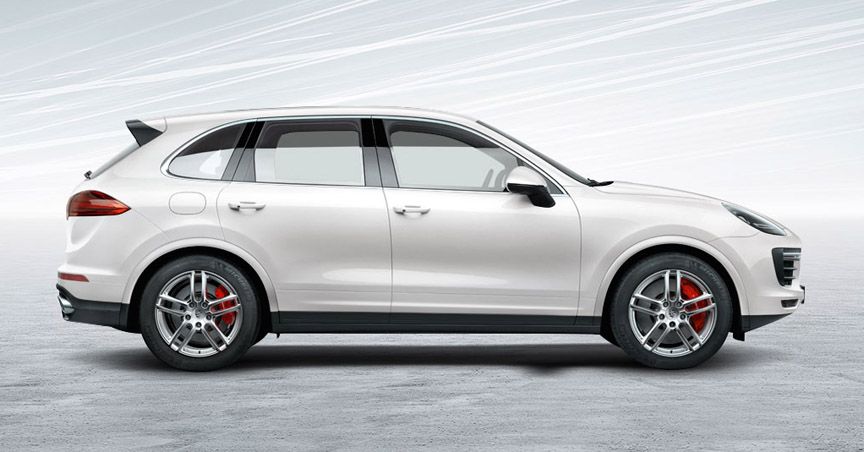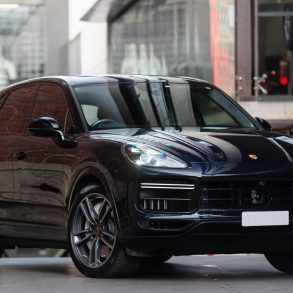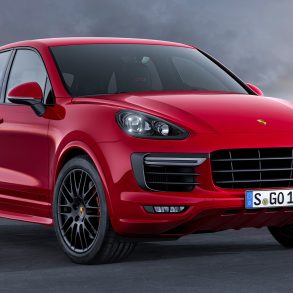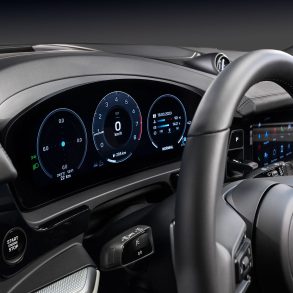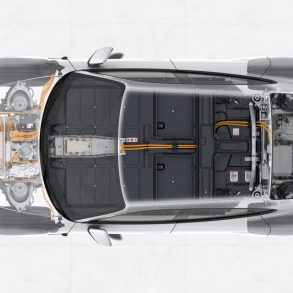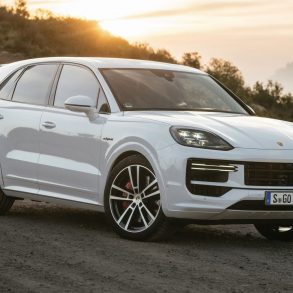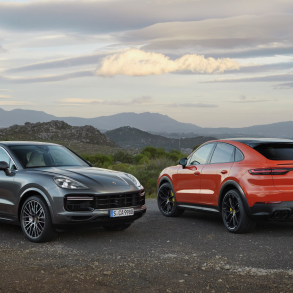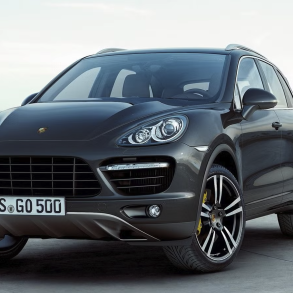2nd Generation Porsche Cayenne (958.2) Story & History
Cayenne (2015 – 2018)
Date of unveil by Porsche AG: 2014 July 24, Turbo S 2015 January 12 / Premiere: 2014 September 26 at Tartu Motoshow, Turbo S 2015 January 12 at NAIAS / World market launch: 2014 October 11 (as 2015 model), Turbo S 2015 April (as 2016 model)
Performance Data
| Modification | Engine | kW | lb-ft | Nm | 0-60 mph | 0-100 km/h | mph | km/h | kg | lbs |
|---|---|---|---|---|---|---|---|---|---|---|
| Diesel RoW (Turbo 3.0) | 3.0V6 Audi | 180 | 406 | 552 | 7.2 sec. | 135 | 217 | 2,110 | 4,652 | |
| Diesel Euro (Turbo 3.0) | 3.0V6 Audi | 193 | 426 | 580 | 7.3 sec. | 137 | 221 | 2,110 | 4,652 | |
| Diesel S (Turbo 4.1) | 4.1V8 Audi | 283 | 625 | 850 | 5.4 sec. | 156 | 252 | 2,215 | 4,883 | |
| 3.6 | 3.6VR6 Volkswagen | 220 | 294 | 400 | 7.3 sec. | 7.7 sec. | 143 | 230 | 2,040 | 4,497 |
| CHINA (Supercharged 3.0) | 3.0V6 Audi | 245 | 324 | 440 | 6.9 sec. | 149 | 239 | 2,159 | 4,760 | |
| Hybrid (Supercharged 3.0) | 3.0V6 Audi 245kW 440Nm + el.motor 70kW 310Nm | 306 | 434 | 590 | 5.4 sec. | 5.9 sec. | 151 | 243 | 2,350 | 5,181 |
| S (Turbo 3.6) | 3.6V6 Porsche | 309 | 404 | 550 | 5.2 sec. | 5.5 sec. | 161 | 259 | 2,085 | 4,597 |
| GTS (Turbo 3.6) | 3.6V6 Porsche | 324 | 441 | 600 | 4.9 sec. | 5.2 sec. | 163 | 262 | 2,110 | 4,652 |
| Turbo 4.8 | 4.8V8 Porsche | 382 | 551 | 750 | 4.2 sec. | 4.5 sec. | 173 | 279 | 2,185 | 4,817 |
| Turbo S 4.8 | 4.8V8 Porsche | 419 | 588 | 800 | 3.8 sec. | 4.1 sec. | 177 | 284 | 2,235 | 4,927 |
Premiere
Interestingly, the Cayenne 958.2 was showed a week before the 2014 Paris Motorshow at the Tartu Motoshow in Estonia.
Off-road image dropped
While the Cayenne 955, 957 and 958.1 had permanent 4WD, from 958.2 the drive force was sent to the front axle only when the rear wheels lost grip, like in the 4-wheel-drive 911. This meant the Cayenne finally became a road car and the off-road image was left behind in favour of lower CO2 emissions and fuel consumption.
Equipment
The 958.1 remained the last Cayenne generation that offered the manual gearbox for the few enthusiasts, so all the 958.2 cars were equipped with the 8-speed Tiptronic.
The Cayenne 958.2 Turbo had full LED headlights. They were optional for other versions, which came as standard with bi-xenon lamps with four-point LED daytime running lights that became typical to the Porsches of the era. Active cooling air flaps were used for the first time in the Cayenne. They are located behind the middle air inlet and are controlled by engine management – they are opened or closed according to the specific driving situation and cooling needs. When the flaps are closed, they improve aerodynamics, and thereby lower CO2 emissions and fuel consumption a bit.
Inside the car, there was a new 918 style steering wheel with shift paddles. The seat ventilation could now be ordered also for the rear seats. The soft-close doors were available for the first time – a long awaited for option by all the customers who were won over from Mercedes, Audi or BMW.
The engines
As diesel engines are not permitted in China because of their smoke and larger than 3-litre engines have high taxes, the basic version for China was fitted with the 3.0V6 supercharged Audi engine. The base models for other markets came with the 3.0V6 TDI Audi engine and the 3.6 VR6 Volkswagen engine. The 958.2 S and GTS have Porsche 3.6V6 biturbo engines instead of the 4.8V8. The 3.6V6 biturbo is from the Macan Turbo. When the Panamera 970.2 was introduced, its S-model got the 3.0V6 twin-turbo instead of the 4.8V8, so this was probably a bit of a drop for the customers, and with the Cayenne, a bigger 3.6-litre V6 was installed in the S-model. The 3.6V6 Macan Turbo engine was developed from the Cayenne 4.8V8 biturbo by cutting away two cylinders. Interestingly, the facelifted Panamera 970 GTS was kept with the V8, while the facelifted Cayenne 958 GTS was equipped with turbo V6. No more normally aspirated V8 in the Cayenne range meant, the best engine sound was gone. The Cayenne Turbo 4.8 has the V8 engine, but the turbochargers eliminate the brutal tones. So, with the GTS, first the special engine sound was eliminated with cutting away the two cylinders and then once again with the addition of the turbochargers. But, what did they say about the subwoofers and turbochargers – there is no substitute to them, except bigger ones!
Turbo S
The more spontaneous response of the Turbo S engine is primarily a benefit of the integral turbochargers, which were housed directly in the exhaust manifolds. The acceleration was significantly improved over the 958.1 Turbo S or the 958.2 Turbo. Once the reaction time passed, the 958.2 Turbo S reached 60 mph in 3.8 seconds and 100 km/h in 4.1 seconds. Compare this to the original 2003 Cayenne 955 Turbo with its acceleration capability of 5.6 seconds to 100 km/h. With Michelin Pilot Sport Cup 2 street legal racing tyres fitted, the Cayenne 958.2 Turbo S was able to lap the Nürburgring’s Northern Loop (Nordschleife) in 7:59.74 minutes. This didn’t just make it the fastest SUV in the world, but also quick among sports cars. For posers, a sport exhaust system was available with a sound symposer that transmitted the V8 sound into the passenger compartment.
Its standard PCCB Porsche Ceramic Composite Brakes include enormous 420 mm front brake discs and, for the first time, 10-piston calipers. The rear brakes have 370 mm discs and 4-piston calipers.
Plug-in hybrid
Plug-in electrical charging was not offered for the 958.1 Hybrid and therefore it didn’t fill the expectations on the reduction of CO2 emissions and fuel consumption. The Cayenne 958.2 S E-Hybrid was the first plug-in hybrid in the premium SUV segment. Its all-electric driving range was 11-22 miles/18-36 km. The power of the electric motor was more than doubled, from 34 to 70 kW. The top speed in all-electric driving is 79 mph/125 km/h. The petrol engine was still the supercharged 3.0V6 from Audi. The 958.2 E-hybrid (plug-in hybrid) became 110 kg /243 lb heavier than was the already heavy 958.1 Hybrid. Although the facelifted hybrid-Cayenne had more power, it had even more additional weight, so its power-to-weight ratio (driving fun) was poorer than on the 958.1 Hybrid.
Because of the high demand for Cayenne, from 2015 the final assembly of the Cayennes is also done in Volkswagen factory in Osnabrück in addition to Porsche factory in Leipzig. Pre-production (full body assembly without drivetrain) for both factories is still done in Volkswagen factory in Bratislava, Slovakia. How to tell if the final assembly was done at Leipzig or at Osnabrück? Check the 11th character in the VIN – if it is “L” then it is Leipzig, if it is “K” then it is Osnabrück (ex-Karmann factory, hence the K).
Porsche Great Britain organized a Guinness World Record attempt – the idea was to pull the heaviest aircraft with a Cayenne. At such a power pulling event the only number important is the torque figure, so the two most torquey Cayennes were taken to the event in Paris. The cars were a Cayenne Turbo S with 588 lb-ft/800 Nm and a Cayenne Diesel S with 625 lb-ft/850 Nm. Both cars were used in pulling the Airbus A380 for at least 100 feet distance (the standard set by Guinness) and the record document didn’t state which Cayenne was used, just that “The heaviest aircraft pulled by a production car was achieved by Porsche Cars Great Britain, at Charles de Gaulle Airport, Paris, France, on April 21, 2017”.
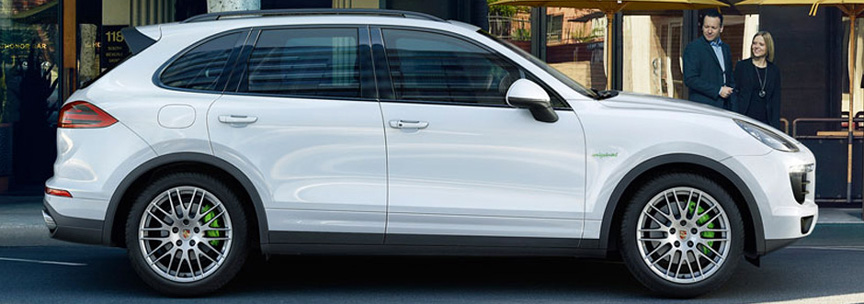
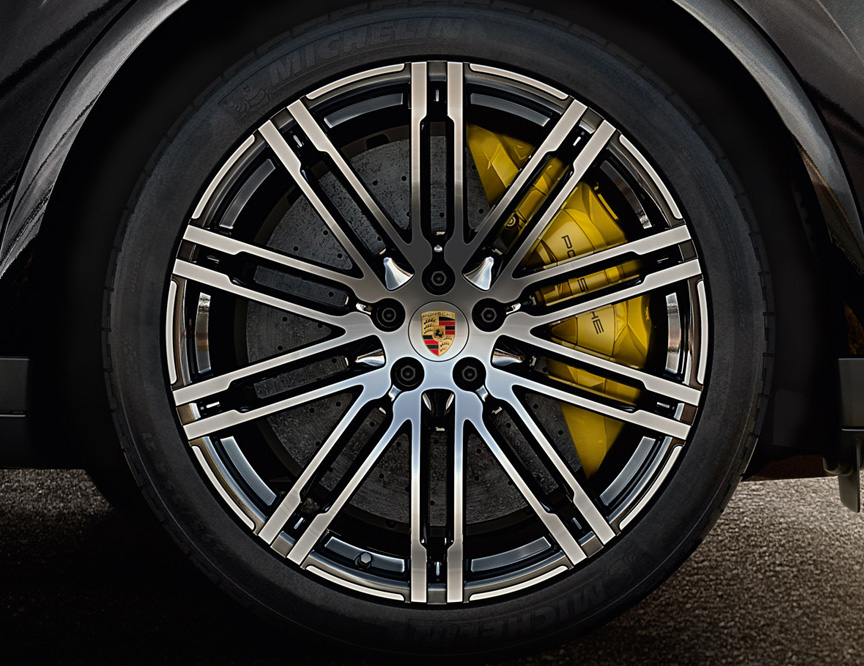
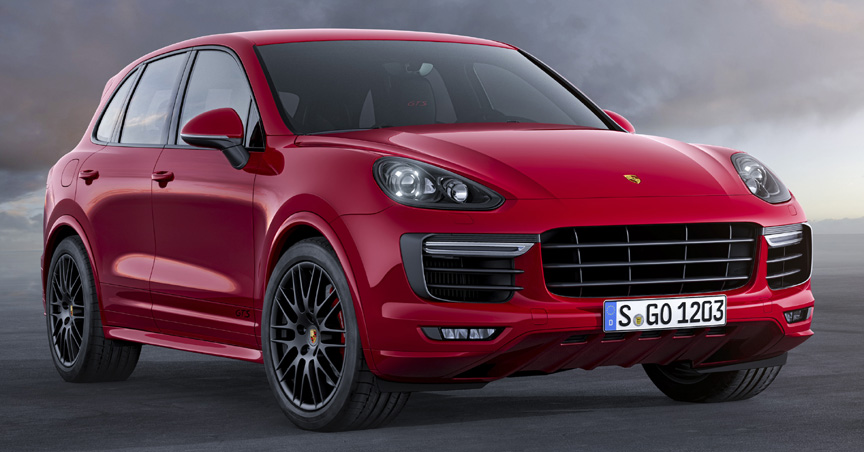
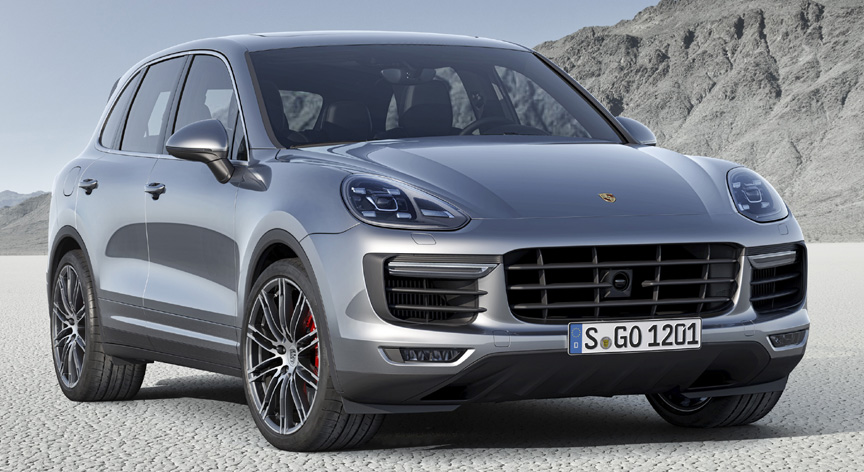
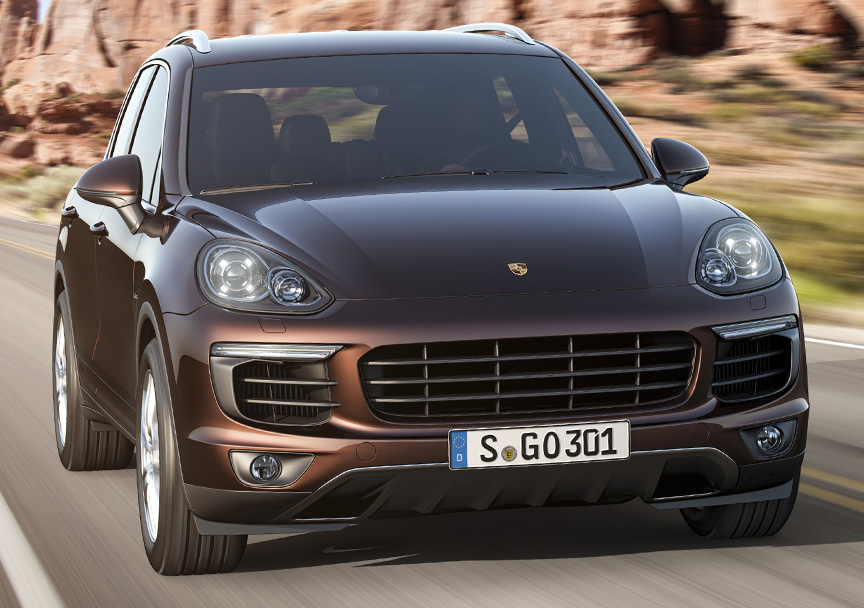
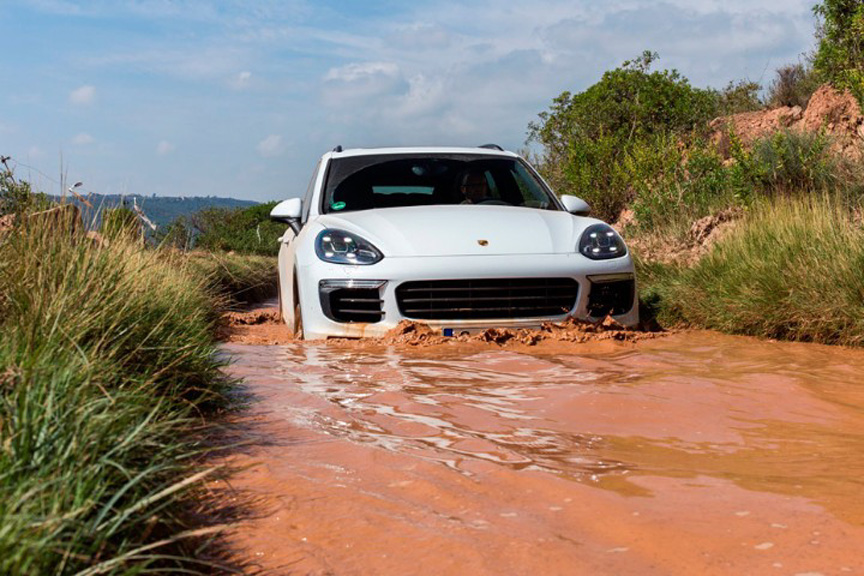
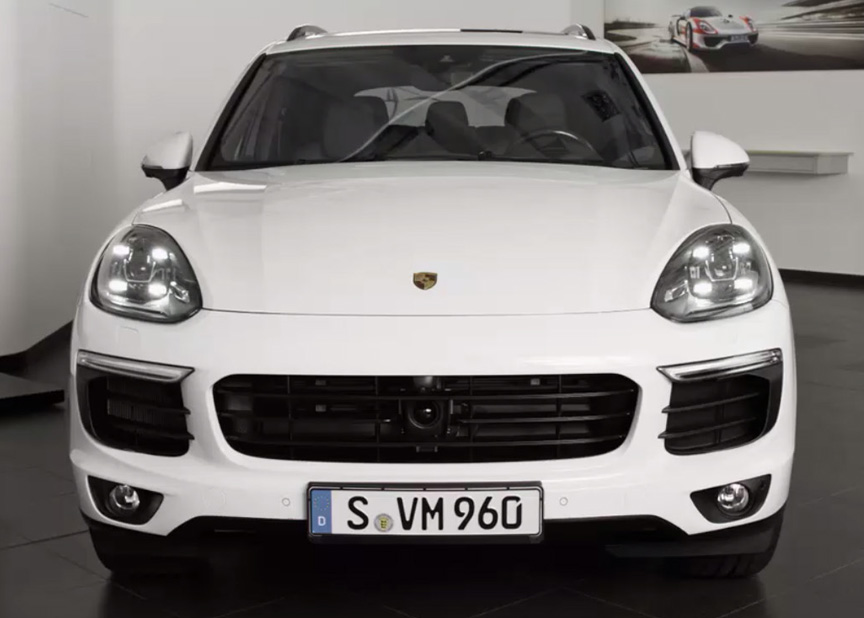
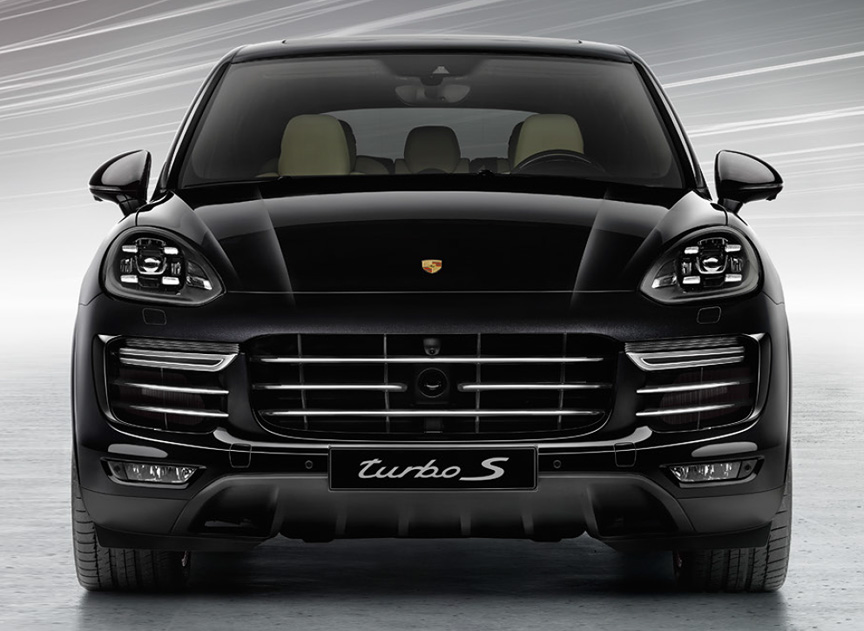
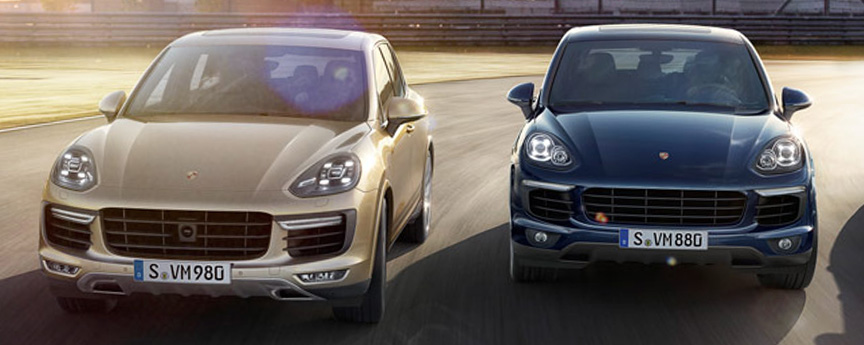
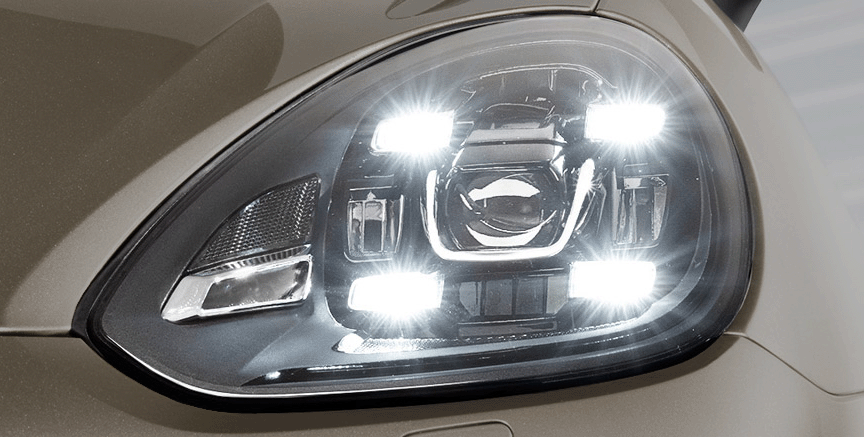
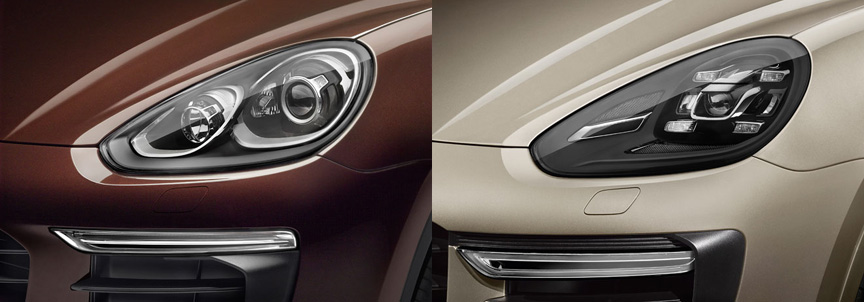
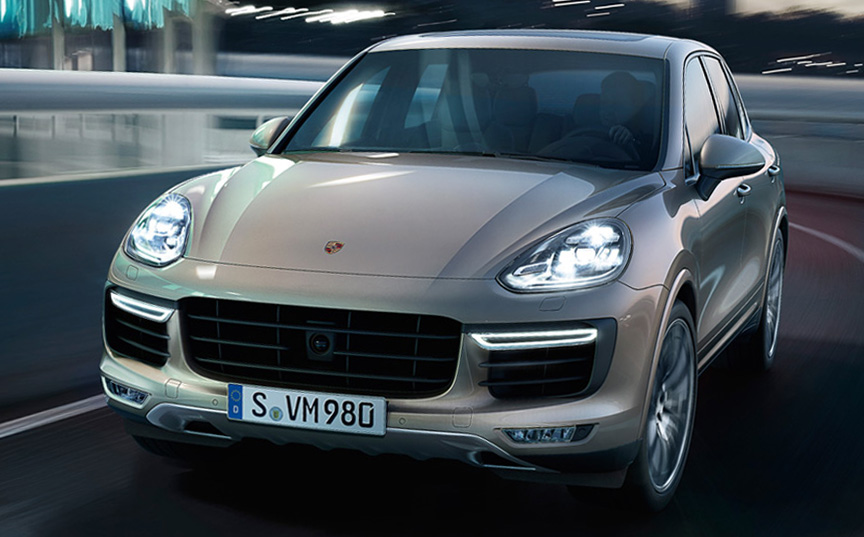
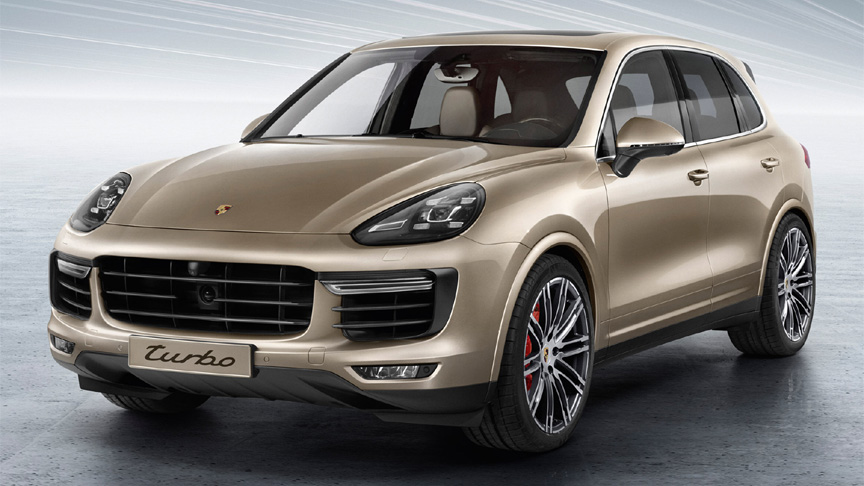
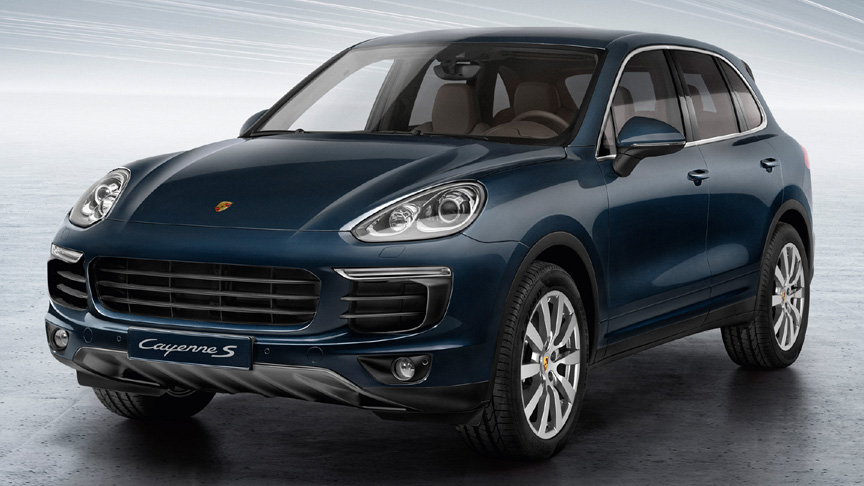
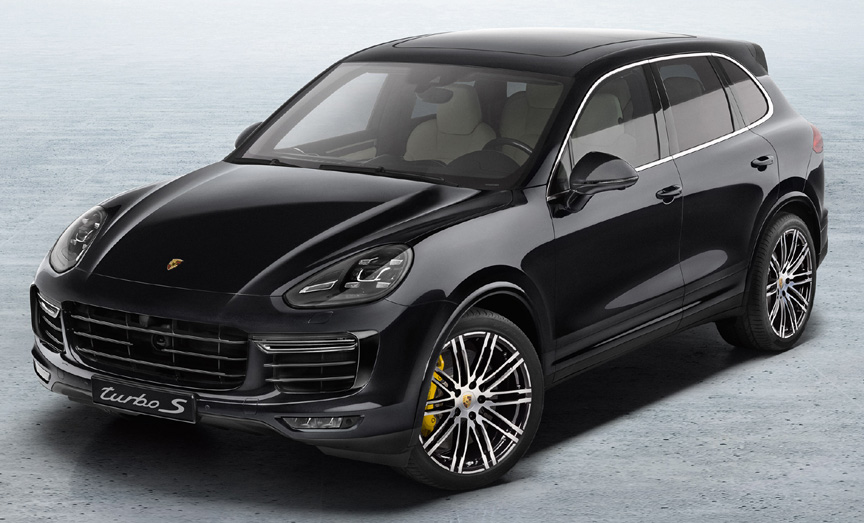
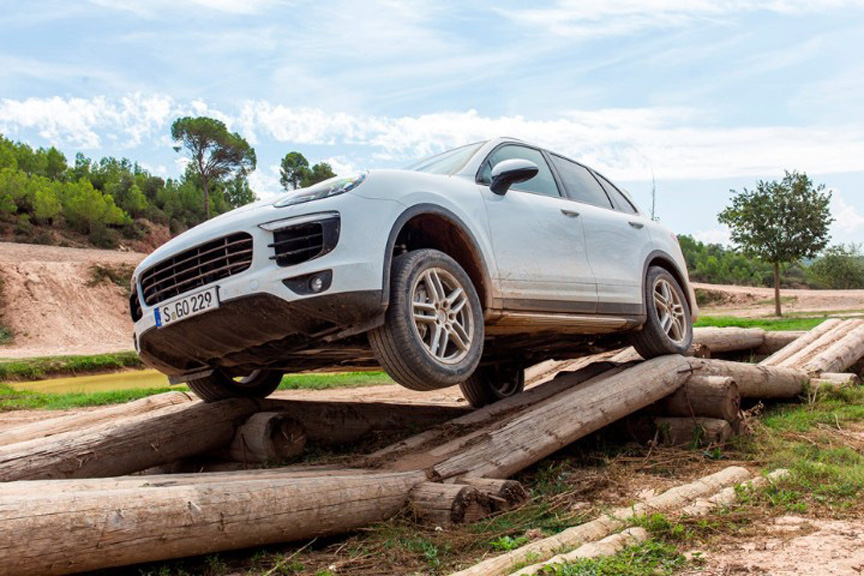

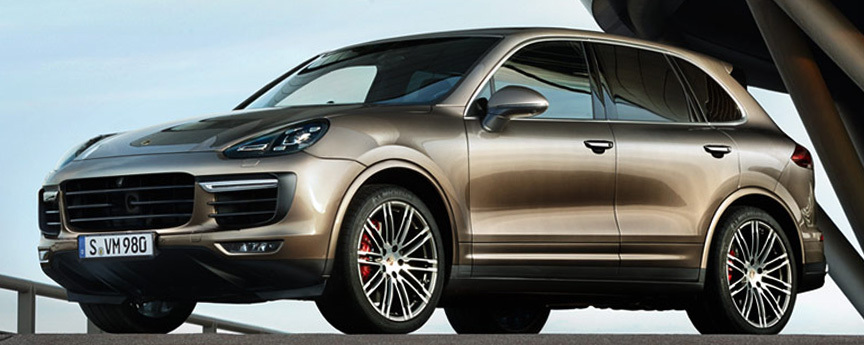


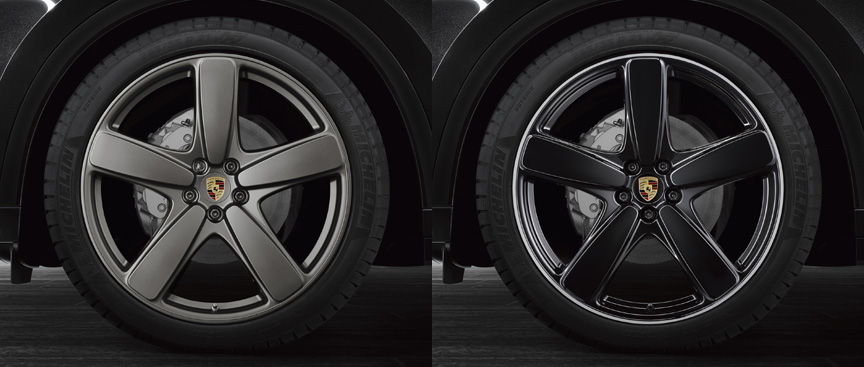
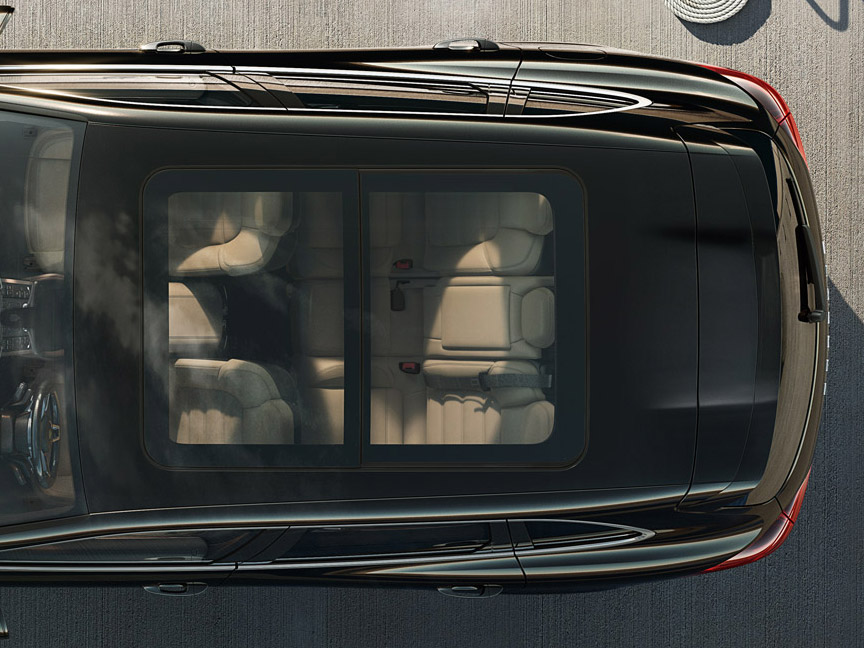
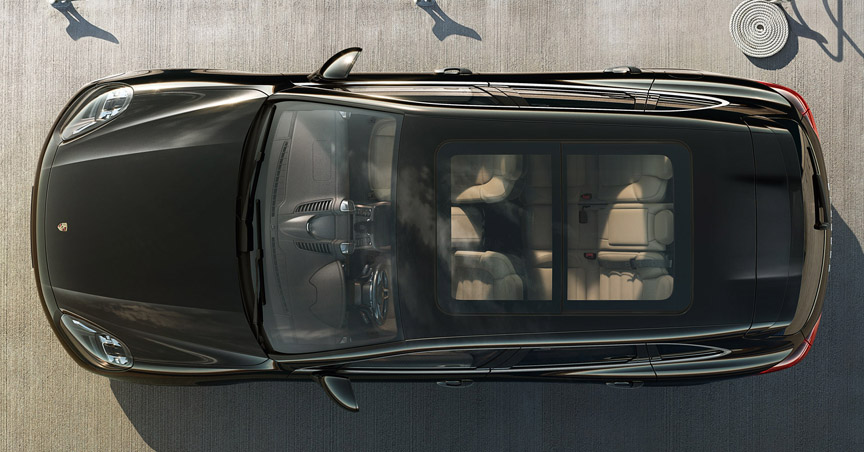
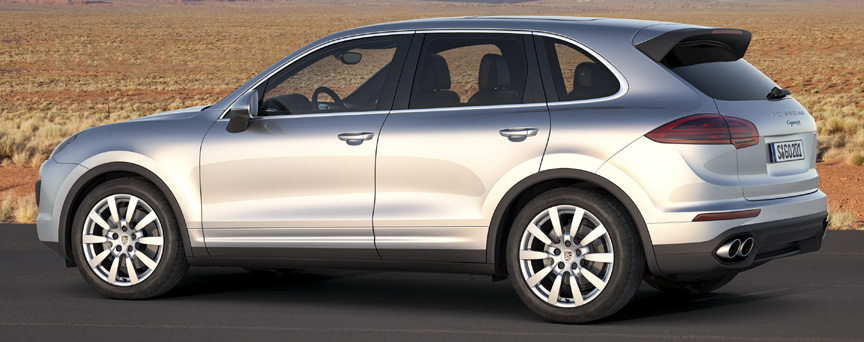
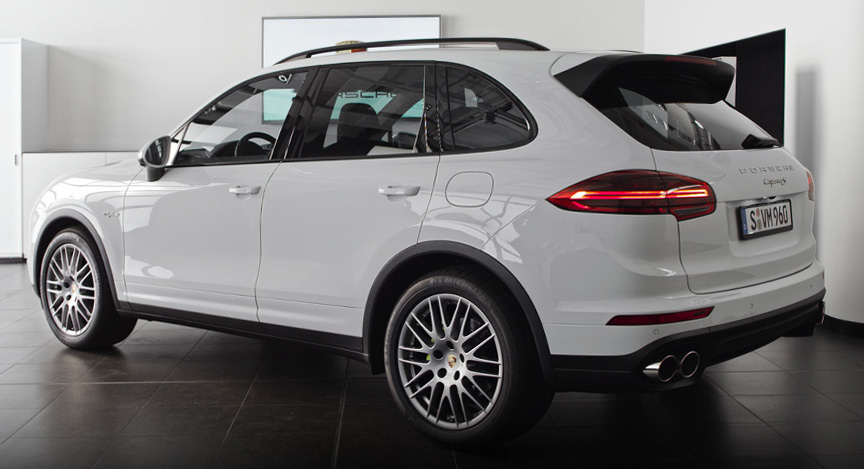
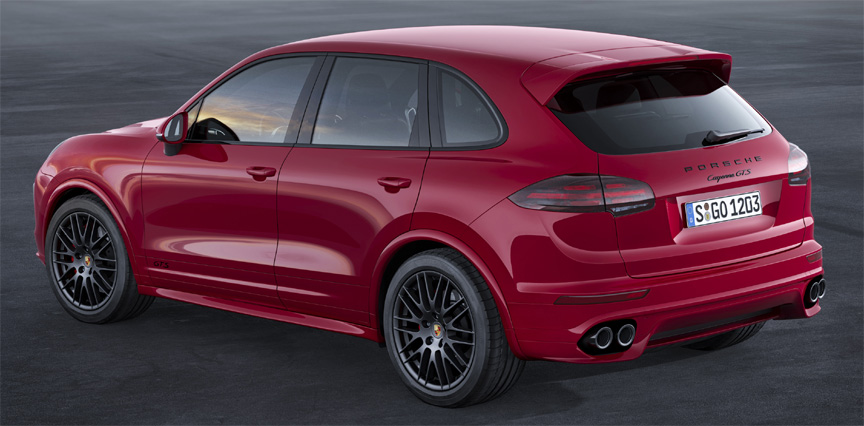
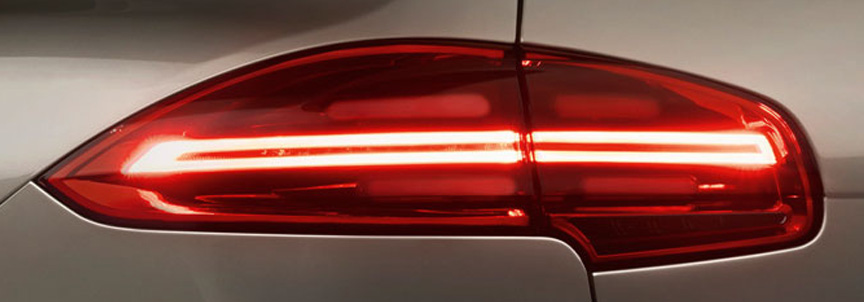
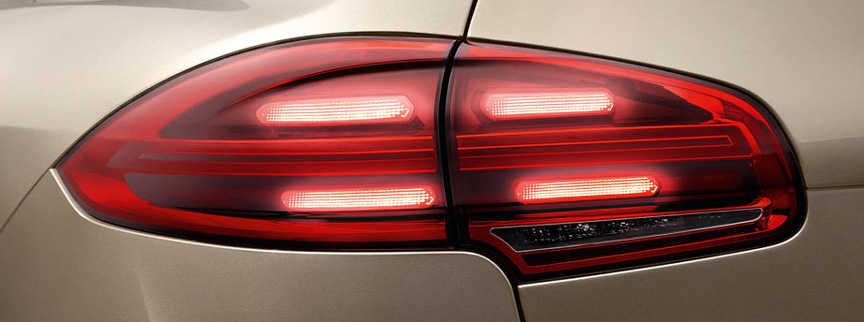
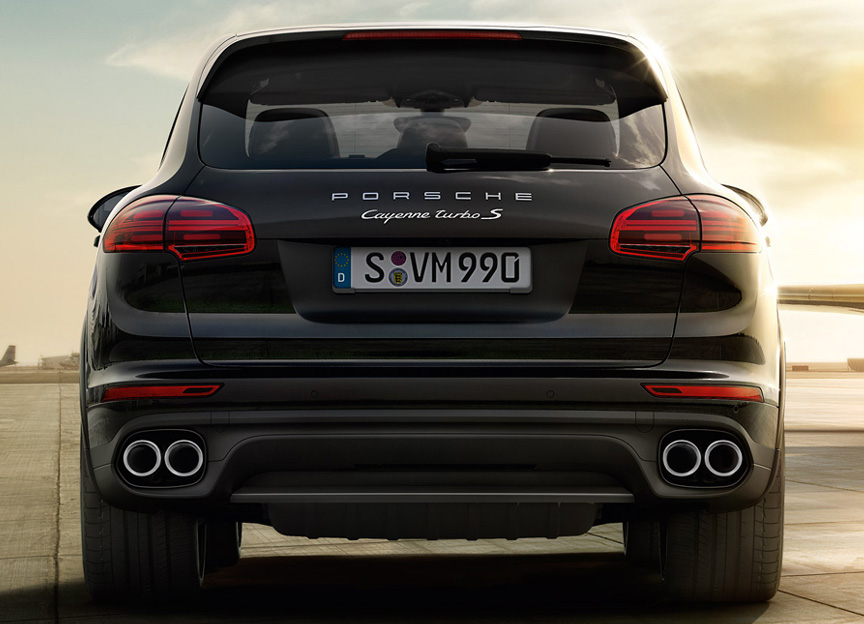
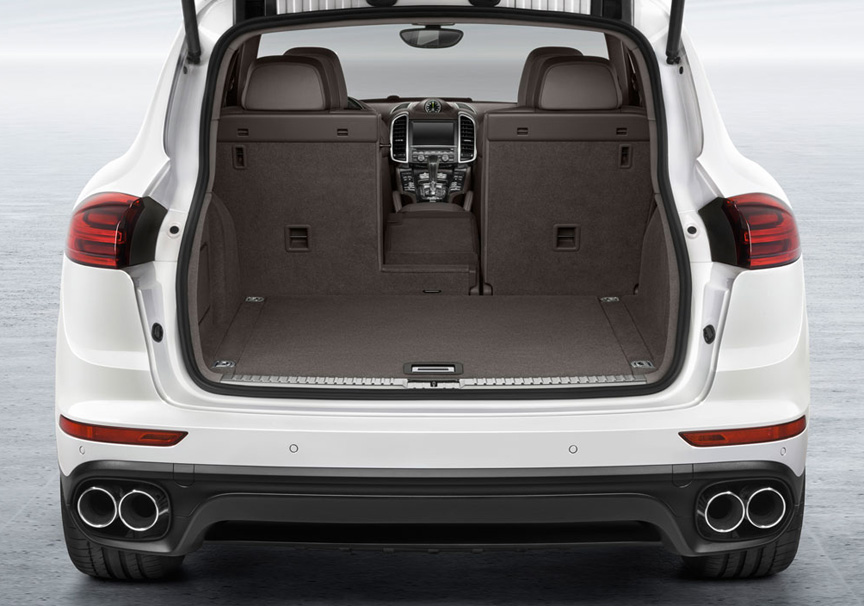
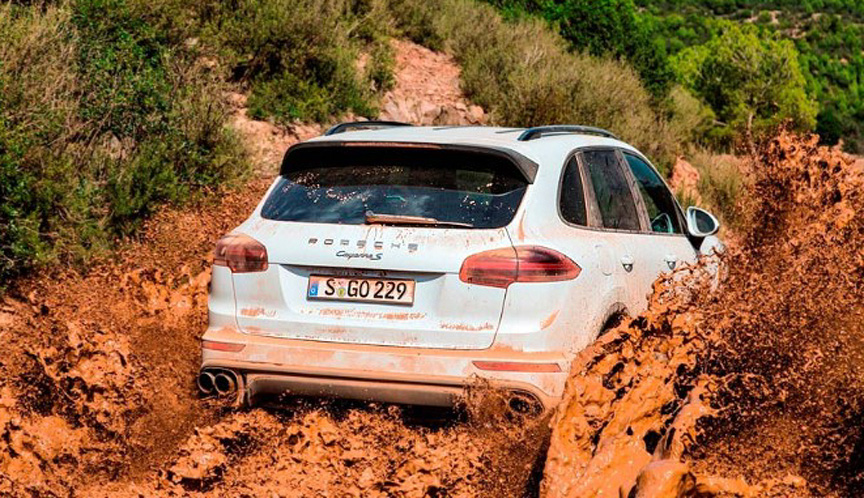
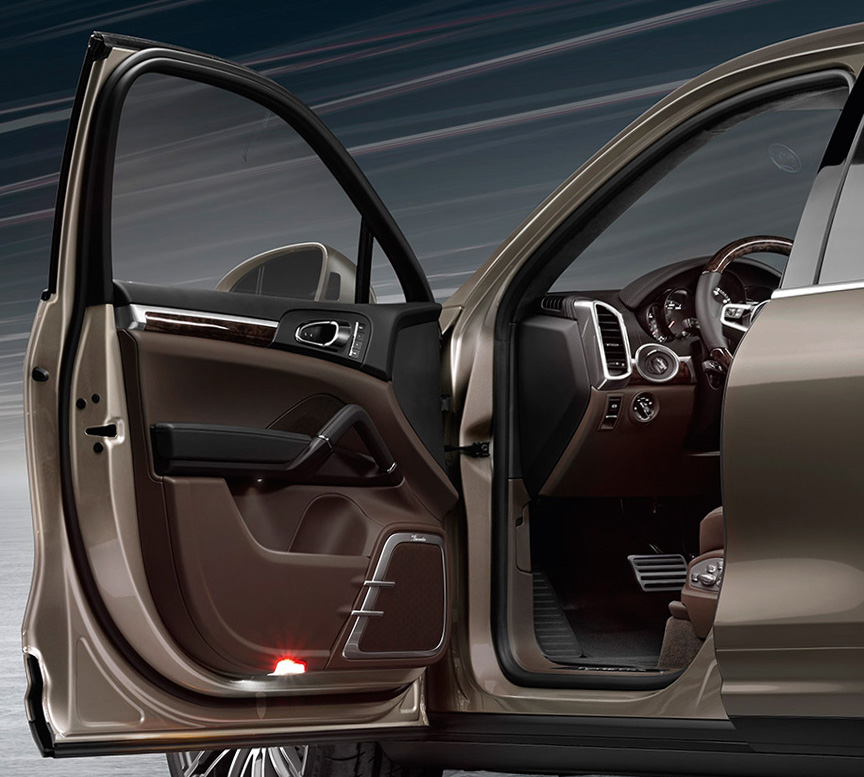

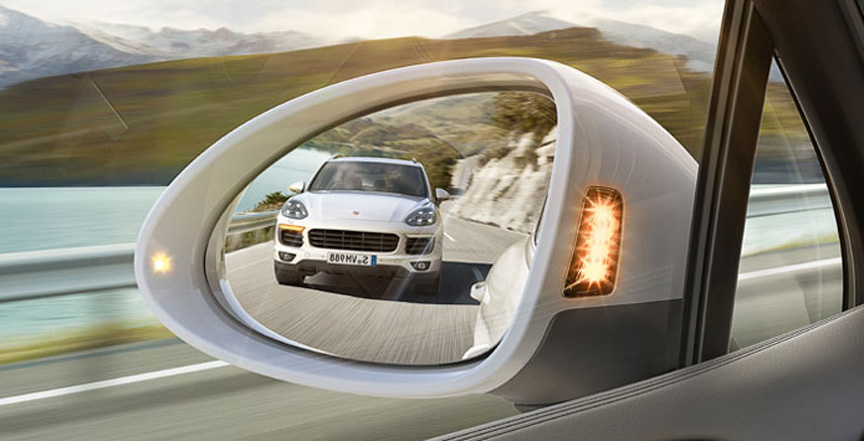
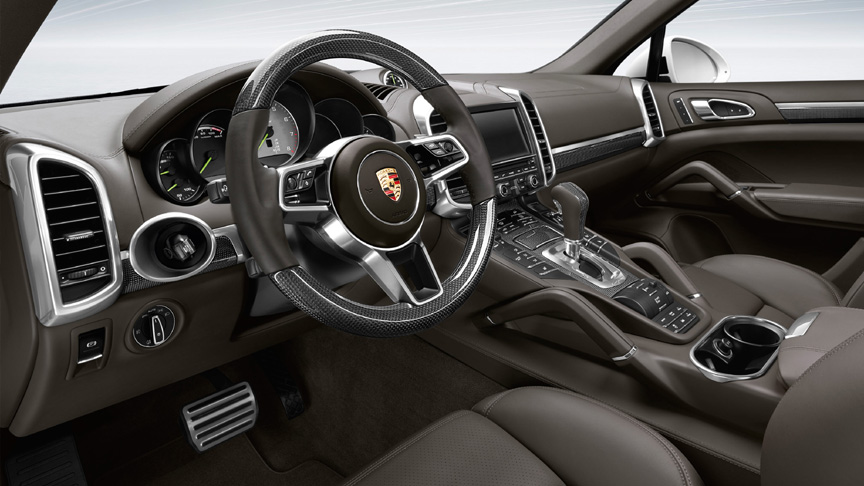
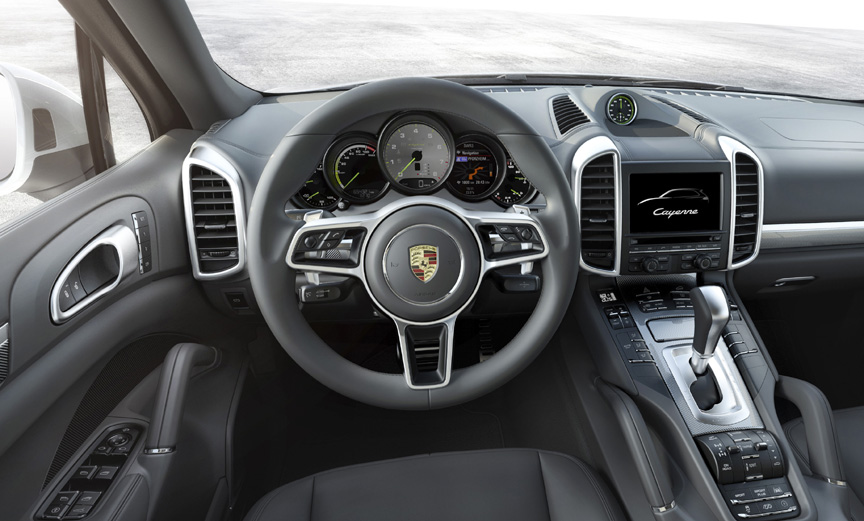
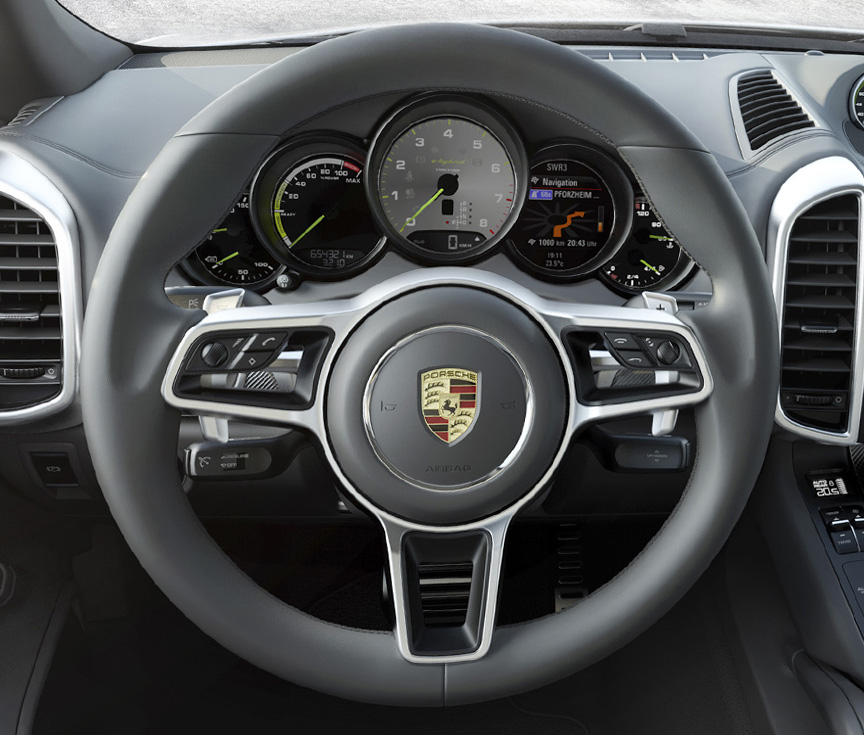
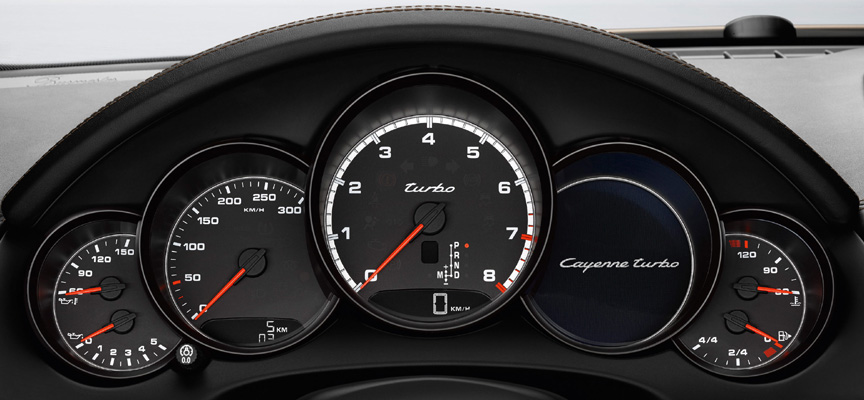
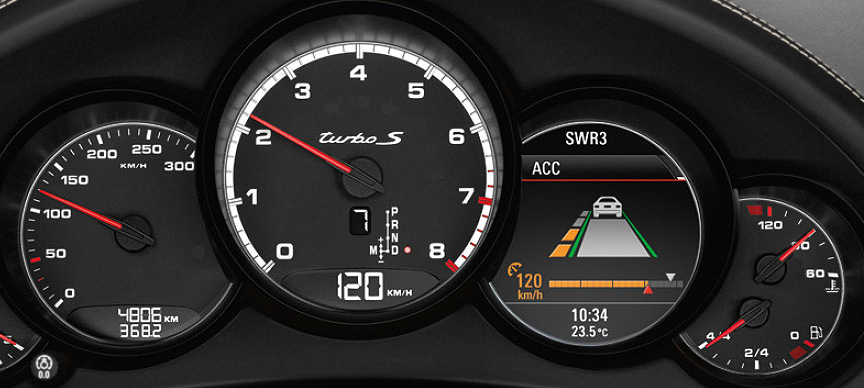
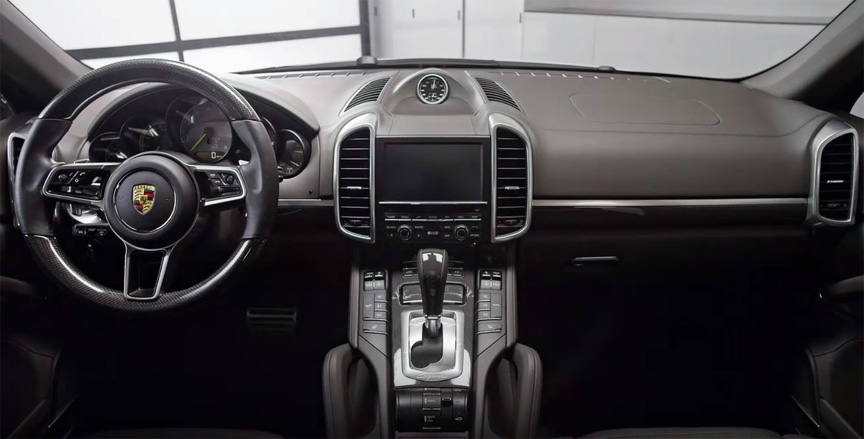
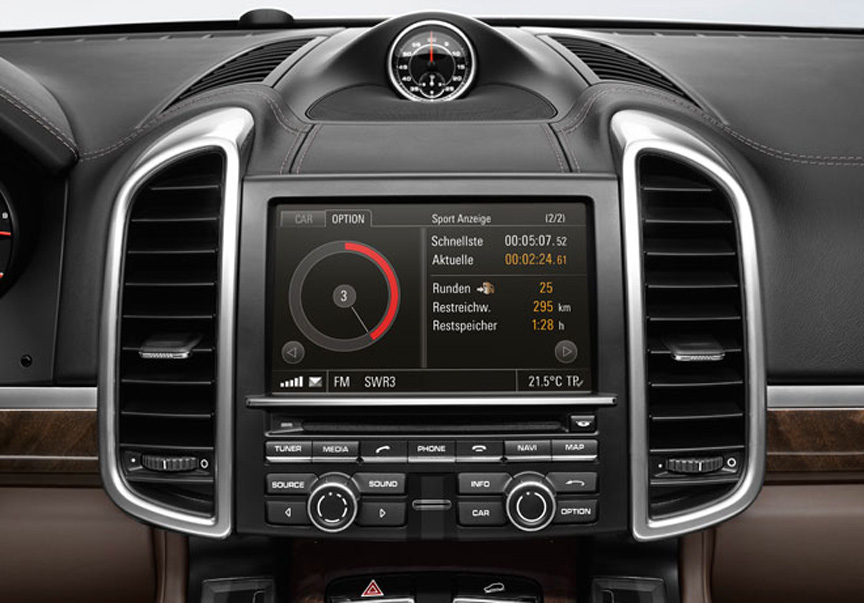
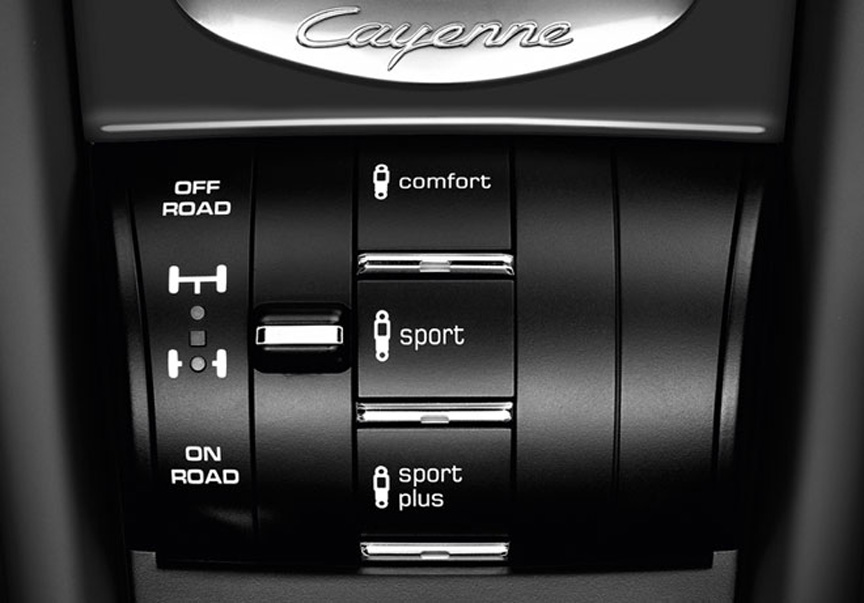
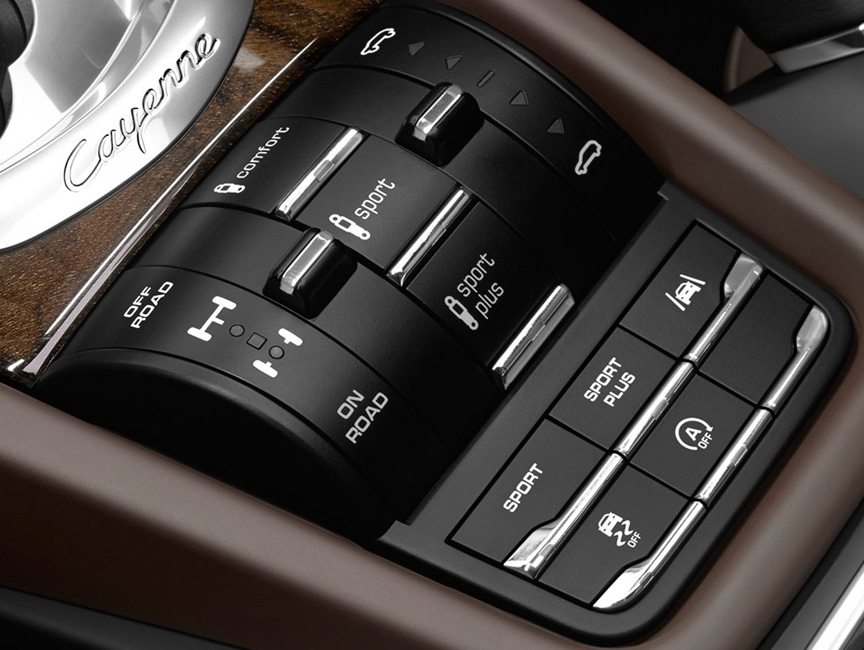
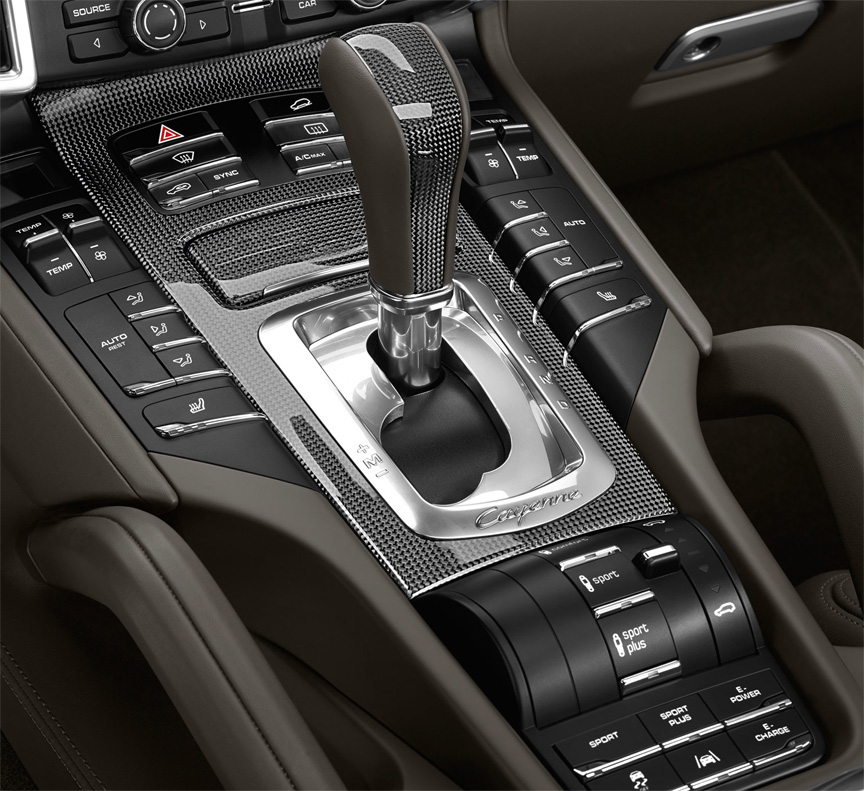
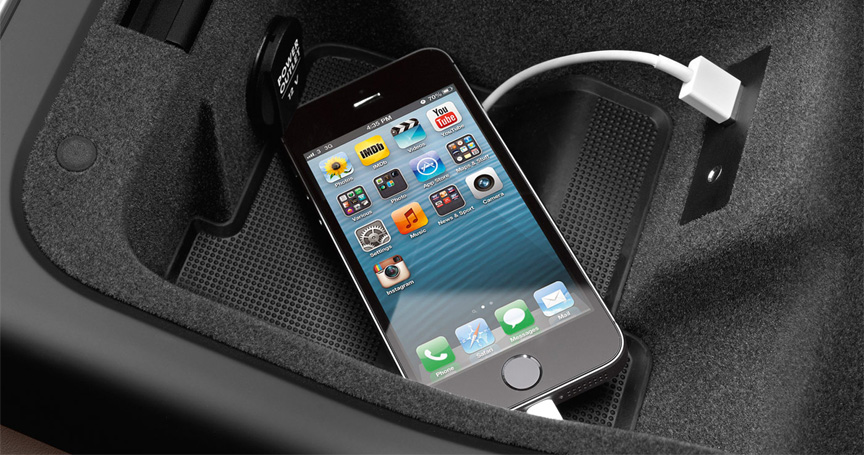
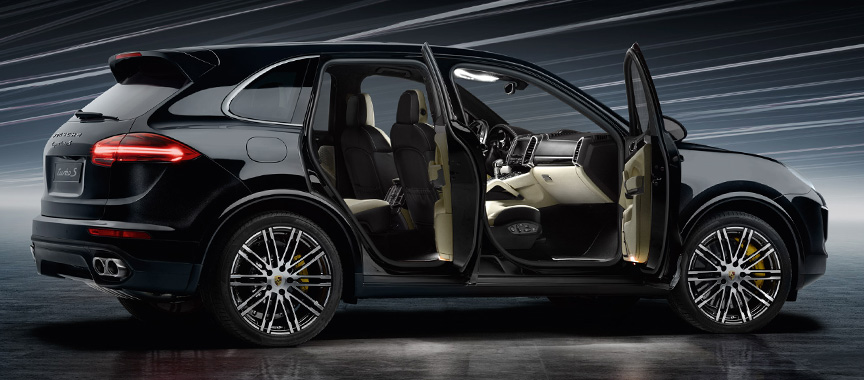
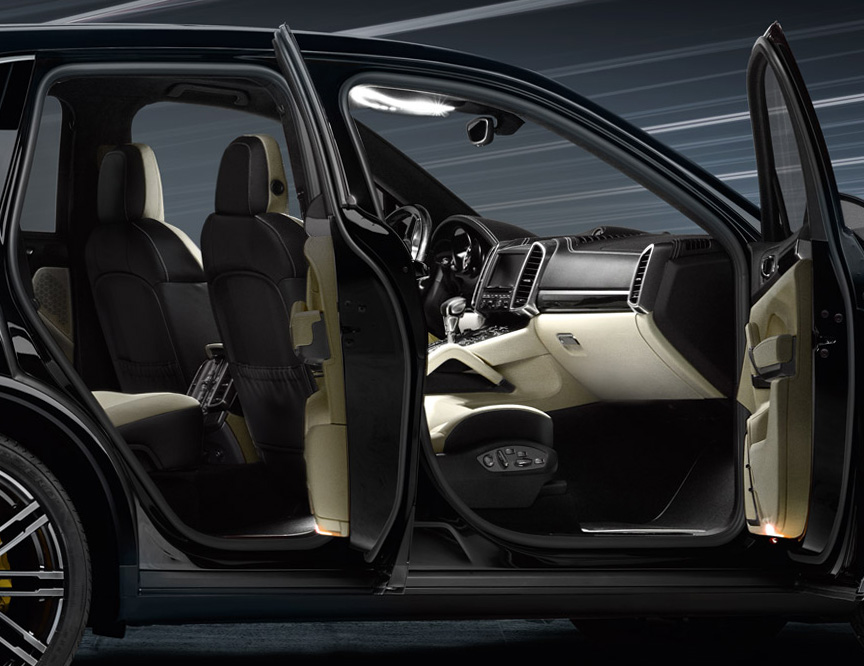
© Porsche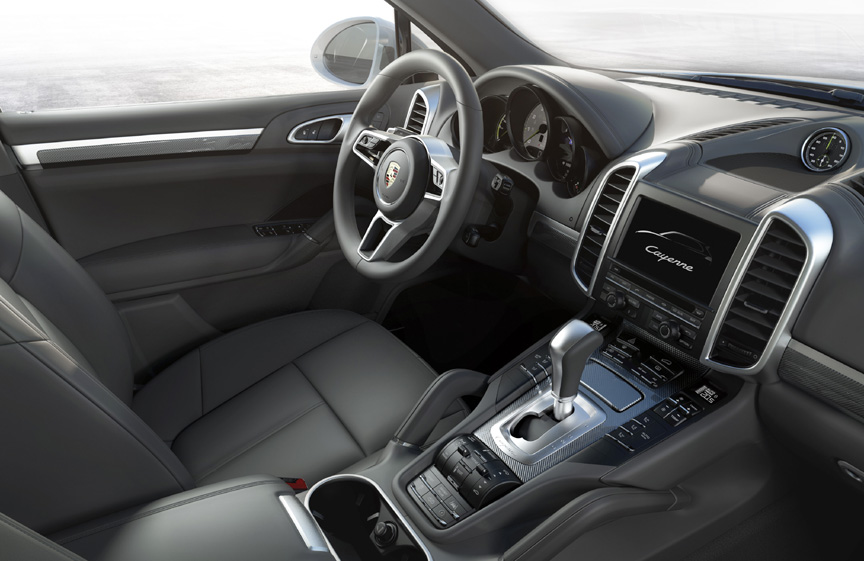
© Porsche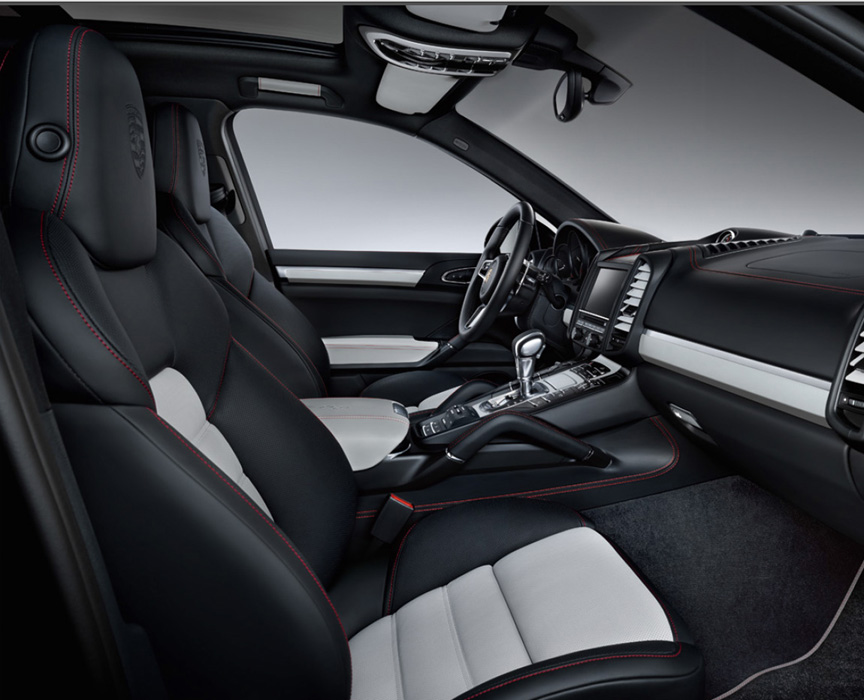
Red stitching here in Turbo S© Porsche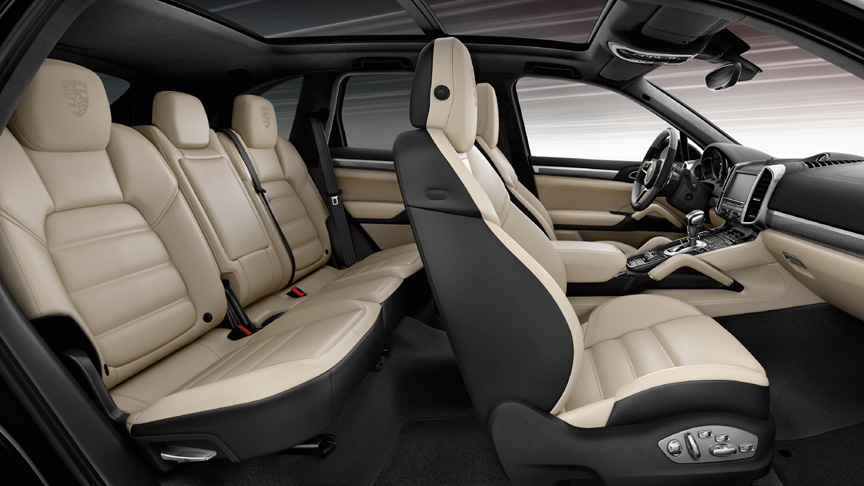
© Porsche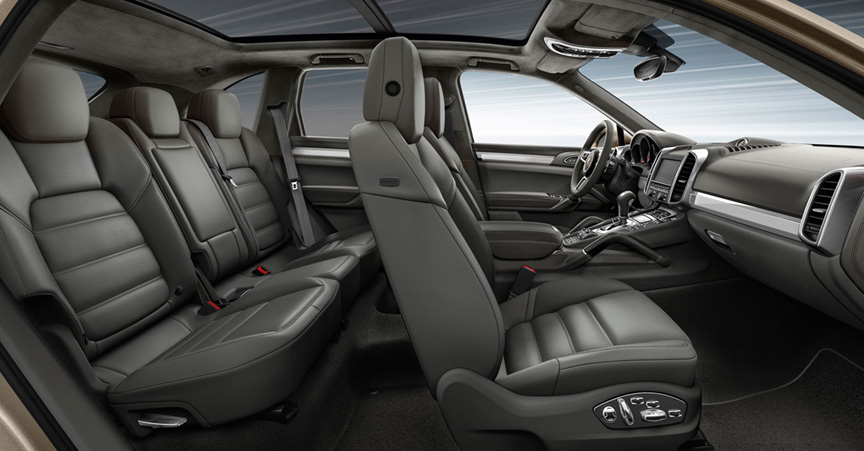
© Porsche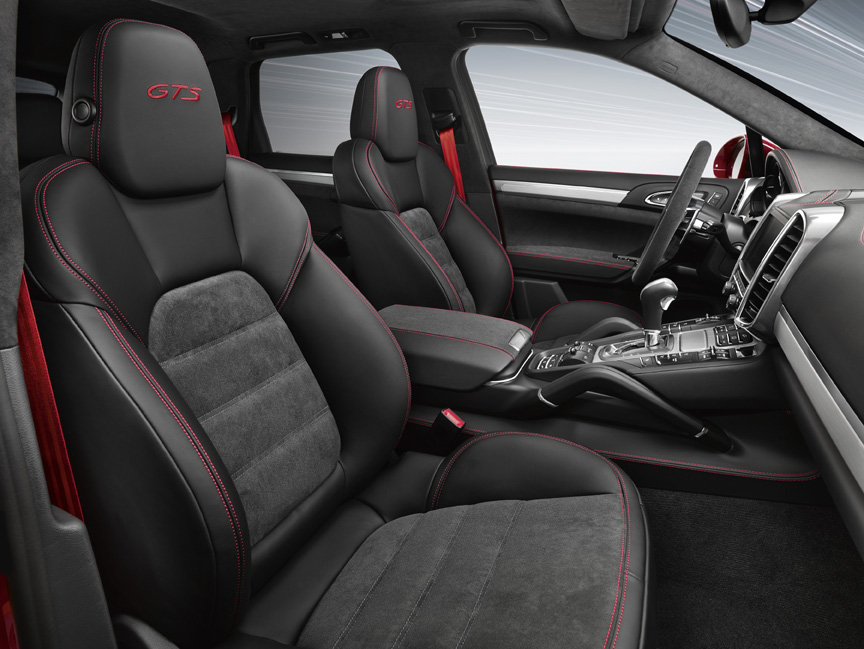
GTS© Porsche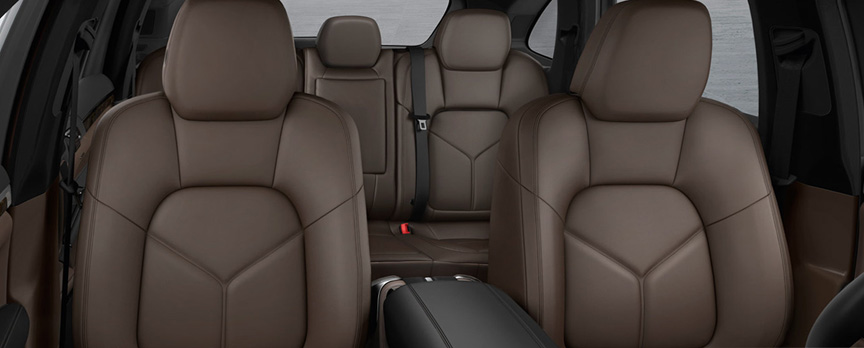
© Porsche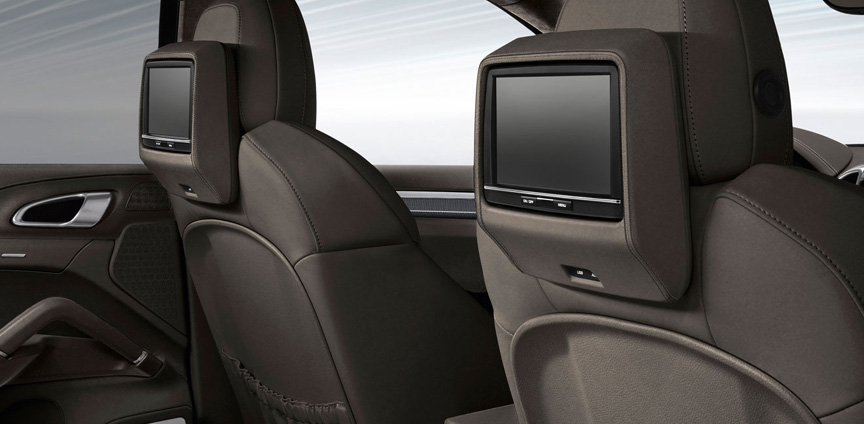
© Porsche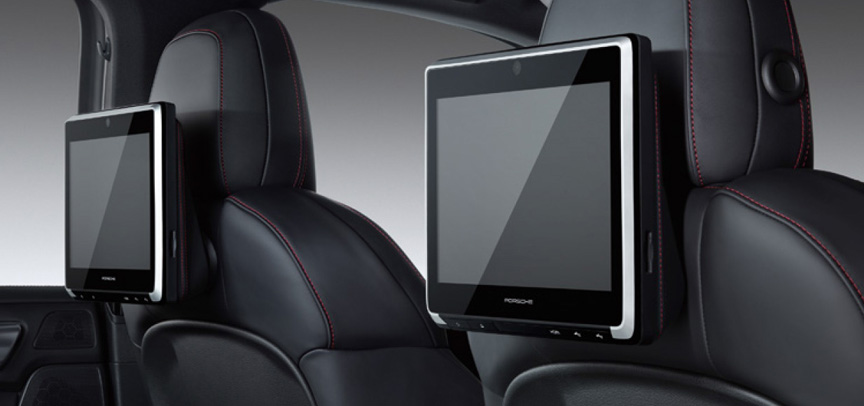
© Porsche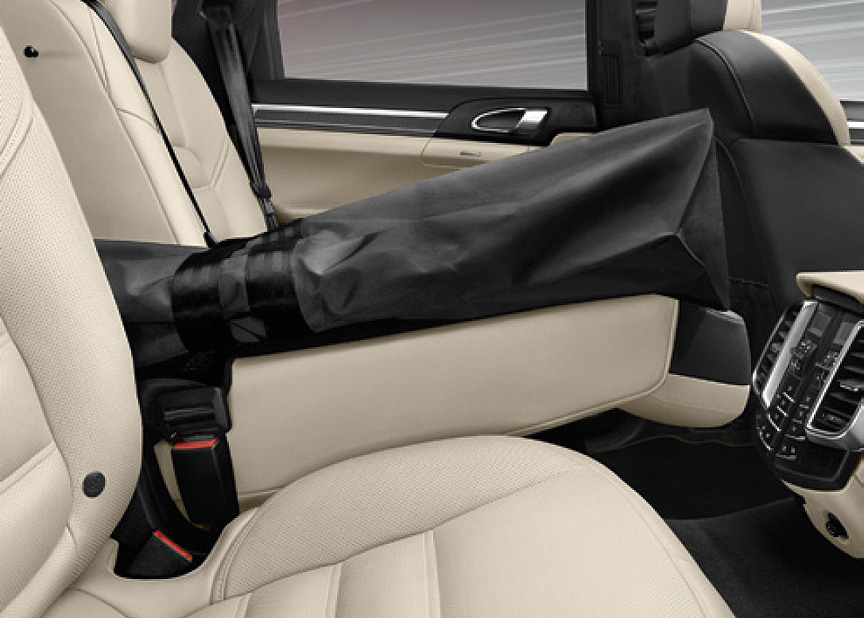
Skibag© Porsche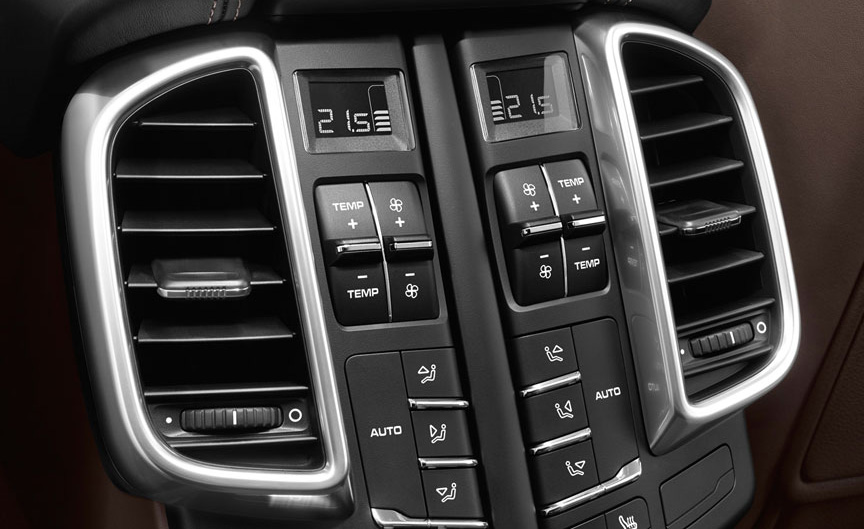
Rear controls of the 4-zone climatronic© Porsche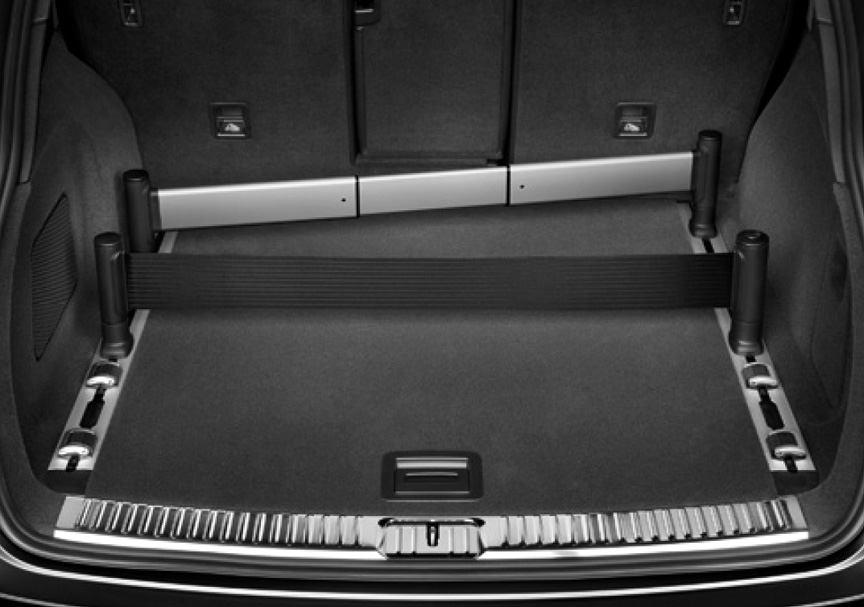
© Porsche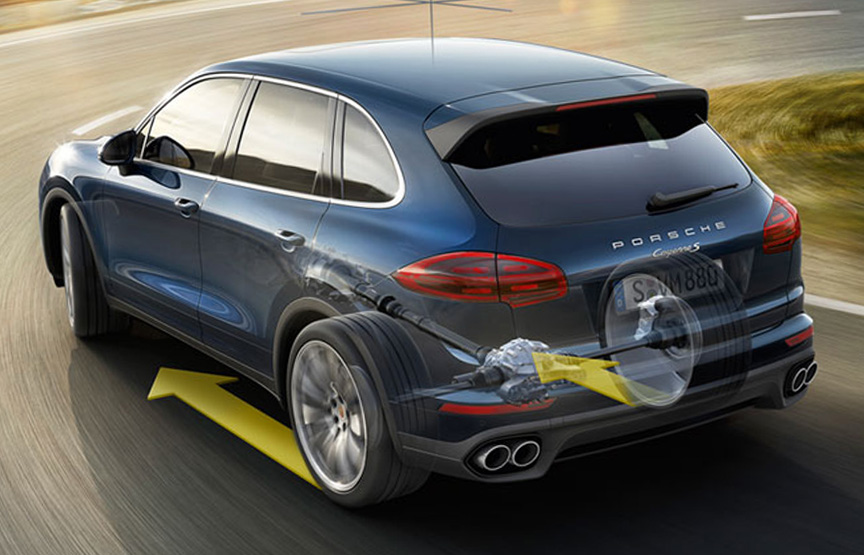
Porsche Torque Vectoring was engineered for the light-nose 911 – for it to turn in better. The Cayenne is not made for racing, so you don’t need the PTV with the Cayenne.© Porsche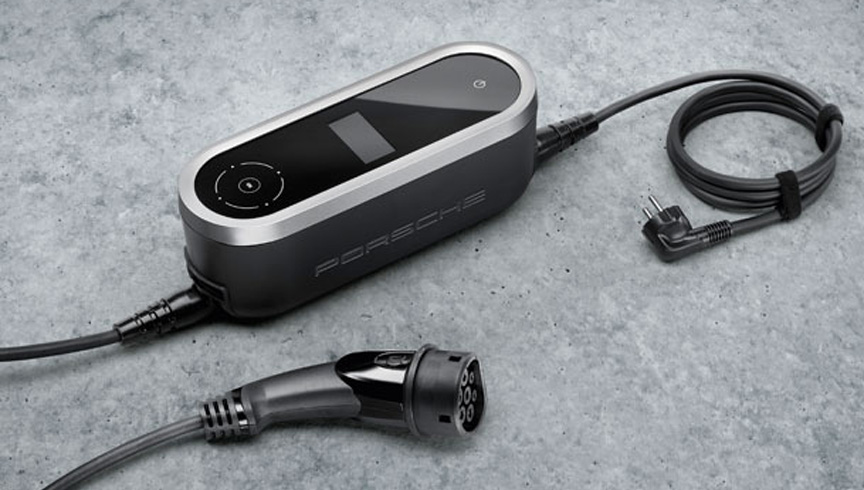
E-hybrid Porsche charger© Porsche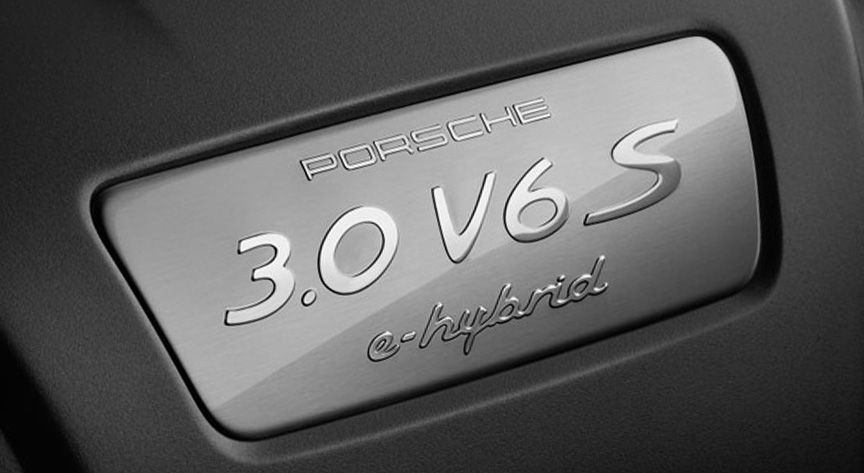
The sign says “Porsche” on this Audi engine© Porsche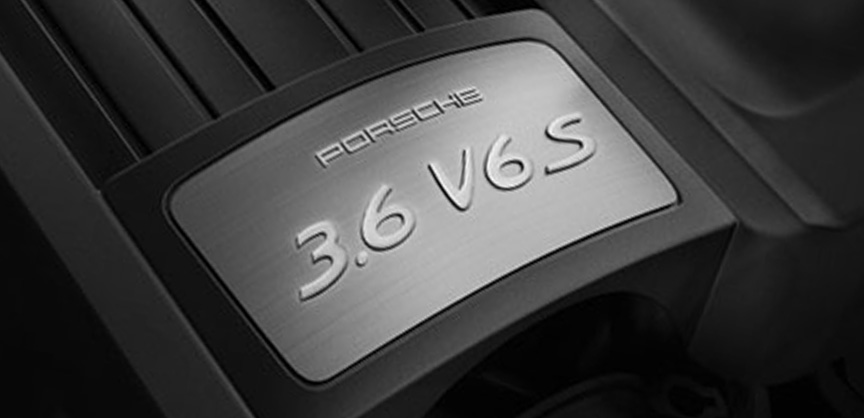
This particular 3.6-litre biturbo engine really is a Porsche engine© Porsche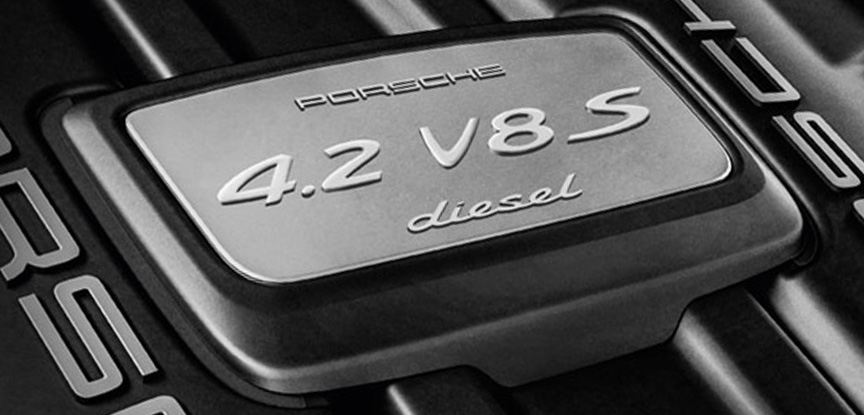
This is actually 4.1-litre Audi engine© Porsche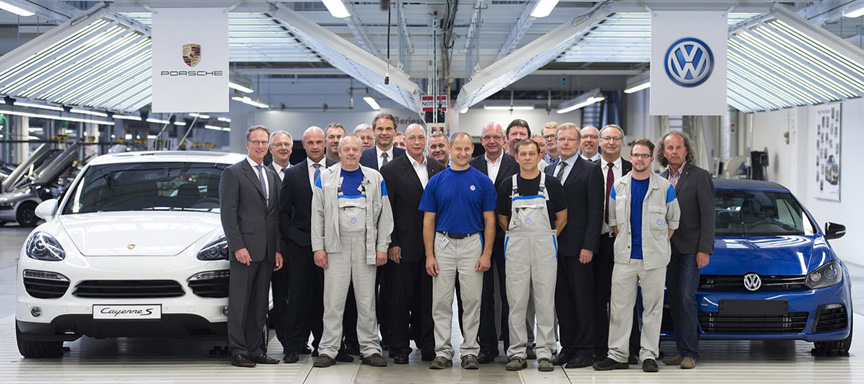
This photo made in summer 2014 in Osnabrück shows 958.1 as 958.2 was not in production yet. In reality 958.1 was never assembled in Osnabrück. The tallest man on the photo, Oliver Blume, will become Porsche CEO 1.5 years later (end of 2015).© Volkswagen
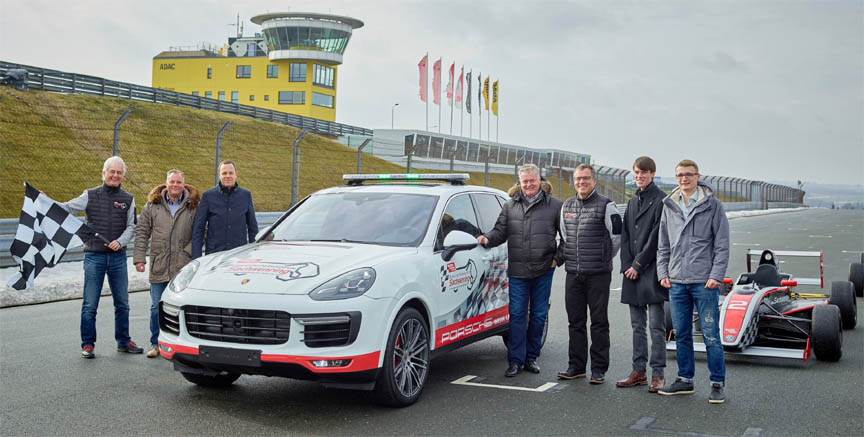
2017 February 20, Cayenne Turbo of Sachsenring
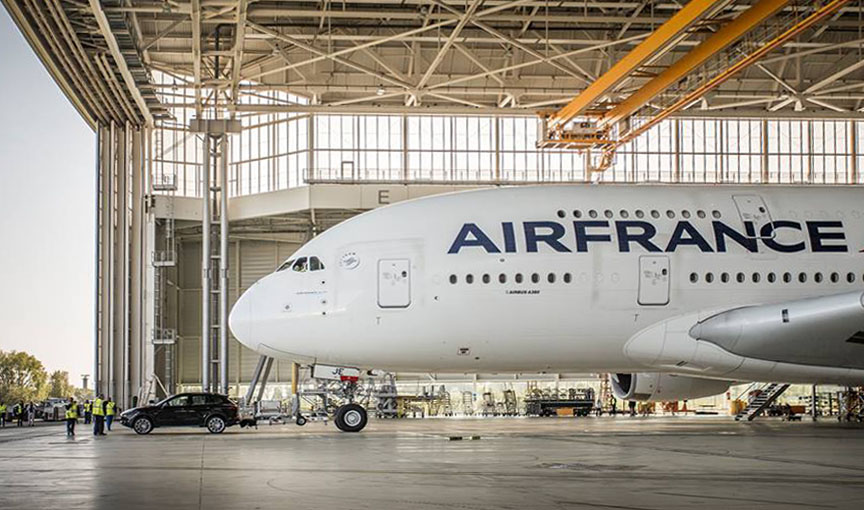
2017 April 21


